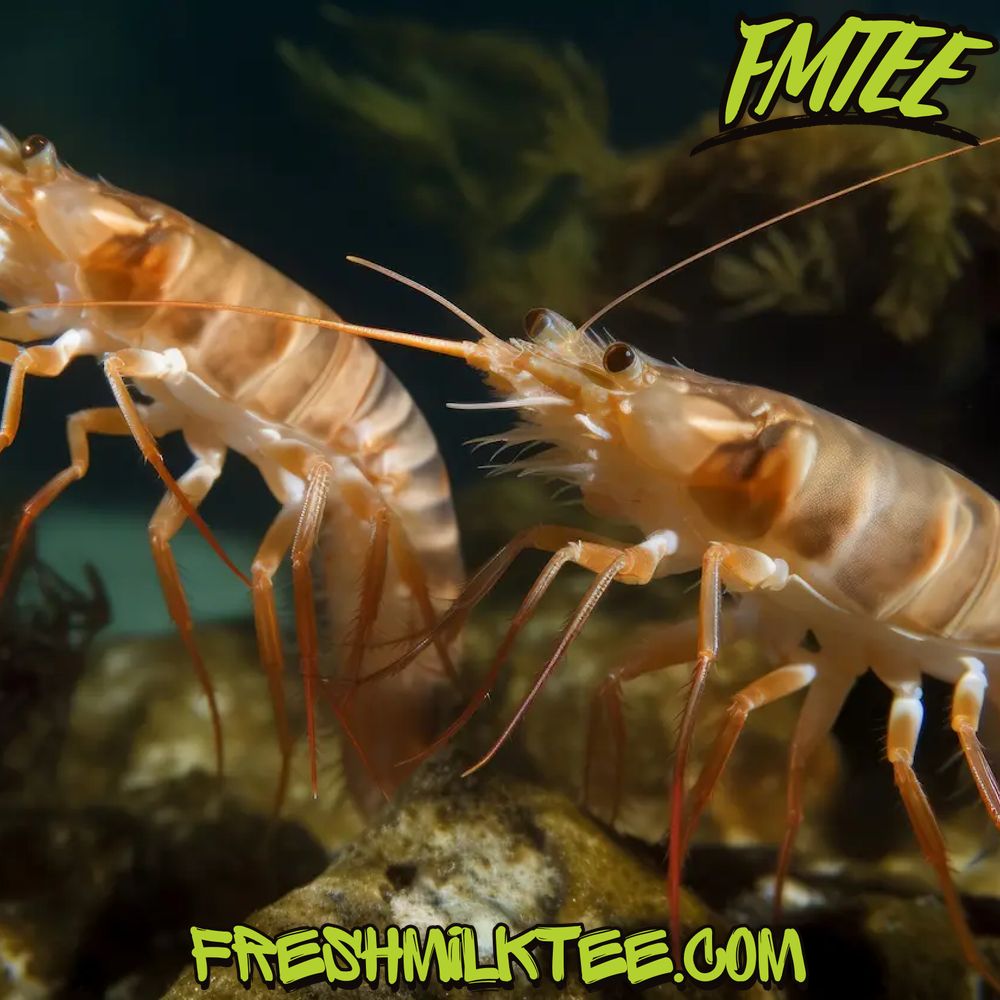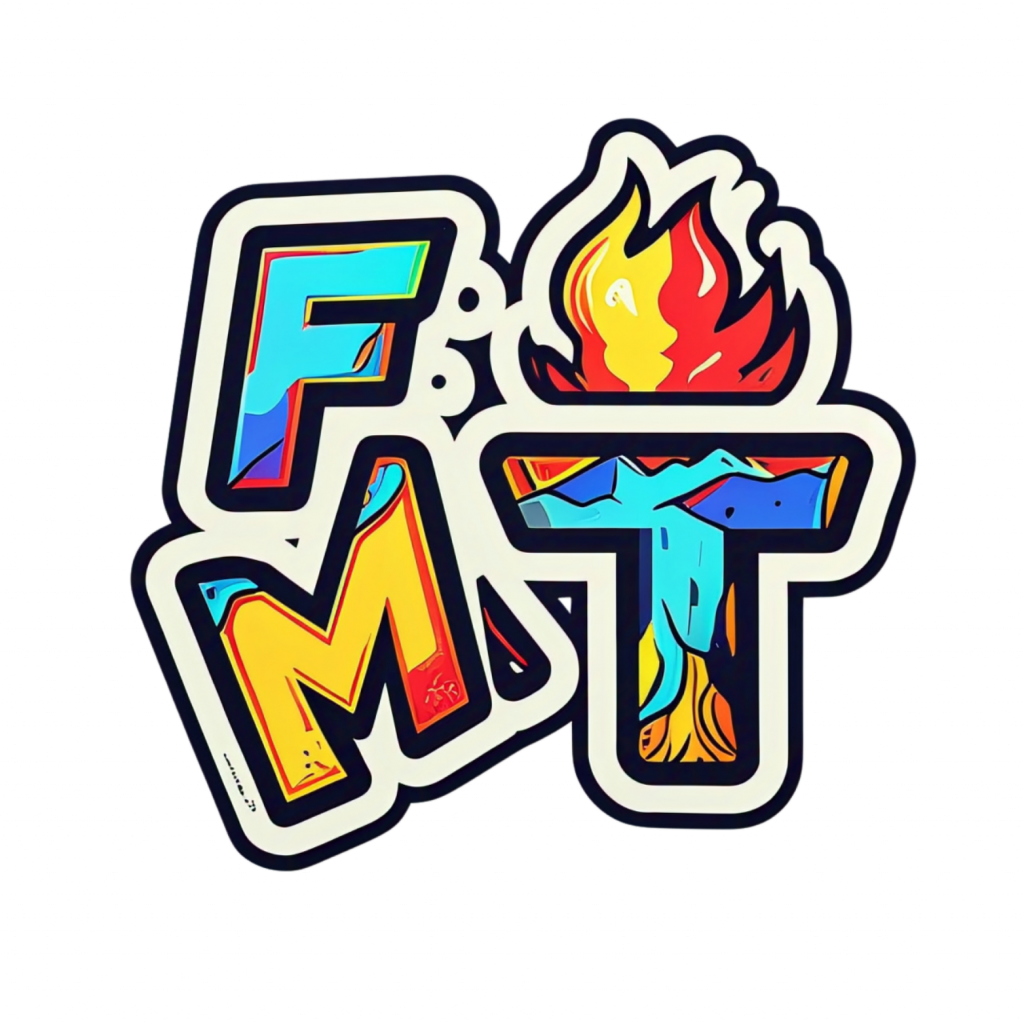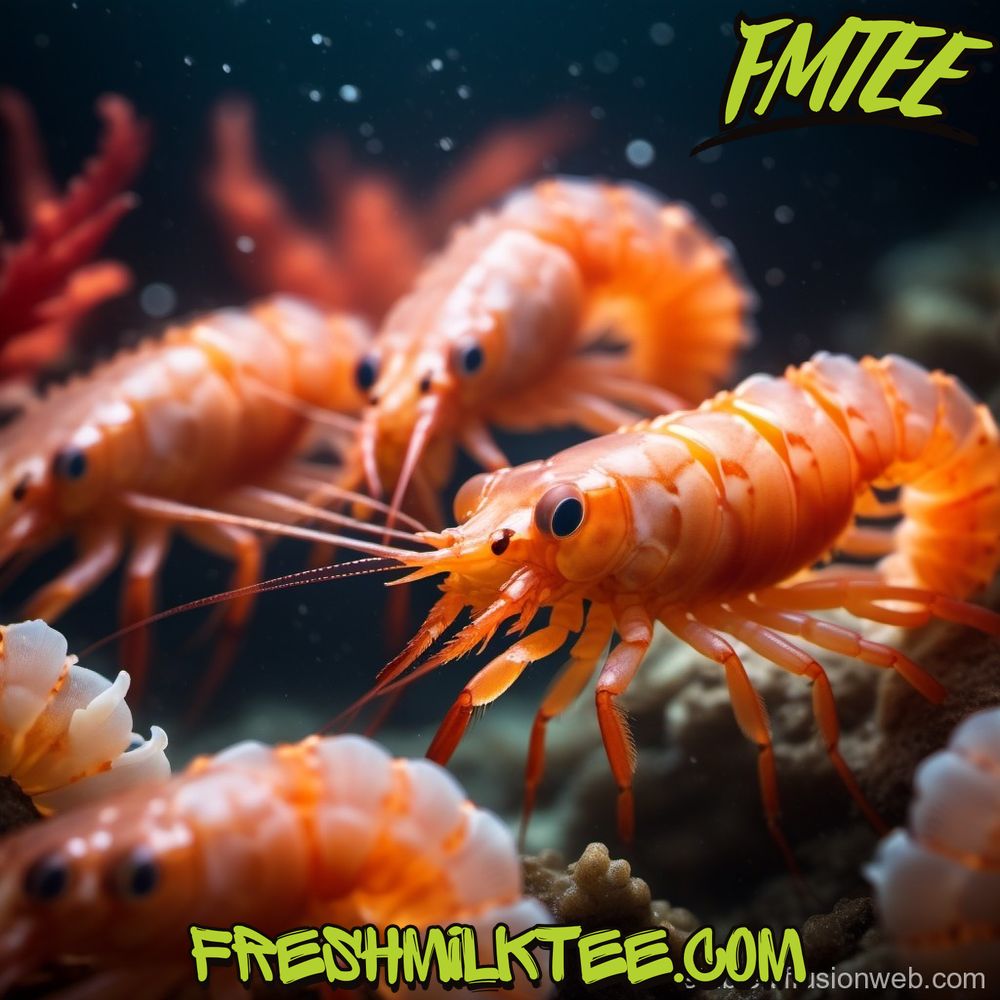Blog
What Do Shrimp Eat?
What Do Shrimp Eat? A Comprehensive Guide
Shrimp are fascinating creatures, and understanding their diet is key to ensuring their well-being, whether they are in the wild, in a saltwater or freshwater environment, or as pets in aquariums. If you’re curious about what shrimp eat, this guide will answer all your questions. From their natural feeding habits to the best foods for shrimp in aquariums, we’ll explore everything you need to know. We’ll also address common questions and help you provide the best diet for your shrimp. Let’s dive into the world of shrimp nutrition!
Introduction: Understanding Shrimp’s Diet
When we think of shrimp, we often think of their role in the food chain, both as a source of food for other animals and as consumers themselves. Shrimp diet plays a crucial role in their growth, development, and overall health. Understanding what shrimp eat helps shrimp owners provide the right nutrients, whether for ornamental or sustainable purposes. The type of food shrimp consume depends on whether they are in the wild or in an aquarium.
Shrimp, in their natural habitats, have a very specific feeding behavior that differs from shrimp in captivity. As scavengers, shrimp nutrition can vary significantly between saltwater and freshwater environments, making it important to feed them accordingly. Let’s explore the key differences in their diet based on their environment.
What Do Shrimp Eat in the Wild?
Plankton for Shrimp
In the wild, shrimp are primarily plankton feeders. They feed on microscopic organisms, including plankton, which are small enough to be filtered from the water. These tiny organisms are rich in essential nutrients that shrimp need to grow and reproduce. Plankton serves as a major component of their diet, particularly in oceanic and coastal regions.
Shrimp’s natural diet in the wild also includes a variety of small animals and plants. In saltwater ecosystems, plankton forms the base of the food web, providing energy for shrimp as well as other marine life.
Algae for Shrimp
Many shrimp species also consume algae found in their environment. Algae are a vital food source because they contain nutrients that help shrimp thrive. For shrimp living in environments with plentiful algae, such as estuaries or shallow coastal areas, algae can make up a significant part of their diet. This is especially true for species like the freshwater Amano shrimp, which are known to consume algae as part of their daily feeding routine.
Detritus for Shrimp
Shrimp are also detritus feeders, meaning they consume decaying organic matter. This includes plant debris, dead organisms, and other organic material that falls to the bottom of aquatic environments. As scavengers, shrimp play a crucial role in keeping their habitat clean by consuming detritus and breaking it down into smaller, more manageable pieces. This natural behavior helps maintain the balance in the ecosystem.
What Do Shrimp Eat in Freshwater and Saltwater?
What Do Shrimp Eat in Freshwater?
In freshwater, shrimp diets can vary slightly from their saltwater counterparts. While they still consume plankton and detritus, freshwater shrimp also rely heavily on plant matter. Many species of freshwater shrimp, such as Cherry shrimp, are known for their affinity for algae, making algae-based food an excellent choice. Some will even eat plants like aquarium moss, helping to prevent the overgrowth of algae.
Additionally, baby shrimp in freshwater environments often feed on microorganisms in the water, as well as algae and detritus. Their small size requires them to consume tiny food particles, which can be found in freshwater ecosystems.
What Do Shrimp Eat in Saltwater?
Saltwater shrimp tend to eat more animal-based foods, such as plankton and small fish larvae. They also consume detritus and algae, much like their freshwater cousins. The difference lies in the concentration of these food types. Saltwater shrimp are more likely to consume larger amounts of plankton due to the abundance of microscopic organisms in the ocean.
The shrimp food list in saltwater environments may also include small crustaceans and detritus, which contribute to their varied diet. As scavengers, they are constantly foraging for any organic material they can break down.

Shrimp Diet in Aquariums
In an aquarium setting, it’s important to provide a balanced diet that mimics the natural food sources of shrimp. Whether in a freshwater or saltwater aquarium, the right nutrition is key to shrimp health and vitality.
Feeding Shrimp in Aquarium
For aquarium shrimp, it’s essential to provide food that caters to their natural diet. Most aquarium shrimp will consume a variety of foods, including algae wafers, vegetable matter, and commercial shrimp pellets. These food sources mimic the algae, plants, and detritus shrimp would encounter in the wild.
Some shrimp owners also introduce algae for shrimp or detritus for shrimp into their tanks, as these mimic their natural scavenging habits. When feeding shrimp in an aquarium, it is crucial to avoid overfeeding to maintain a healthy tank environment.
Do Shrimp Eat Algae?
Yes, shrimp eat algae, and in fact, many species of shrimp are known as algae eaters. They consume both macro and microalgae, which help keep their environment clean. Algae are an essential source of nutrients for shrimp, providing them with the vitamins and minerals they need for growth and development. This makes algae a primary component of their diet in aquariums.
Do Shrimp Eat Plants?
Some species of shrimp may nibble on plants, but this is typically more common in freshwater shrimp like the Amano shrimp. These shrimp are known for grazing on soft plants, especially in planted aquariums. While they don’t usually damage plants, their feeding behavior helps control algae growth and prevents plants from becoming overrun with unwanted organisms.
Types of Food for Shrimp
Providing a diverse and nutritious diet for shrimp ensures their overall health and well-being. Here are the main types of food that should be included in a shrimp’s diet:
Shrimp Food List
The shrimp food list includes:
- Algae wafers: Ideal for both freshwater and saltwater shrimp.
- Shrimp pellets: These are specially formulated to meet the nutritional needs of shrimp.
- Vegetable matter: Shrimp enjoy eating blanched vegetables like spinach and zucchini.
- Live foods: Some shrimp, especially in freshwater, may benefit from occasional live foods like daphnia or brine shrimp.
It’s essential to rotate shrimp food types to ensure they get the required nutrients for optimal growth. Avoid feeding shrimp food that contains additives or preservatives that could harm their health.
Do Shrimp Eat Dead Fish?
Yes, shrimp are scavengers and will happily consume dead fish or other organic matter in their environment. This behavior helps clean the aquarium and is natural for shrimp species in the wild. However, in an aquarium setting, it is important to regularly clean up uneaten food to avoid water contamination.
Nutritional Needs of Shrimp
Understanding shrimp nutrition is vital for both aquarium owners and those studying these fascinating creatures. Shrimp require a balanced diet that includes:
- Proteins: To support growth, molting, and reproduction.
- Carbohydrates: For energy.
- Fats: For cell structure and energy storage.
- Vitamins and Minerals: To support overall health, including calcium for shell growth.
Including a variety of foods like algae and detritus in their diet will help meet their nutritional needs. Freshwater shrimp may need more plant-based food, while saltwater shrimp may rely more on animal-based food.
Feeding Baby Shrimp: Special Considerations
What Do Baby Shrimp Eat?
When it comes to baby shrimp, their feeding needs are different from adults. Since they are tiny, baby shrimp often consume smaller food particles, such as microorganisms in the water or specially formulated baby shrimp food. Ensuring they have access to algae and fine detritus is crucial for their growth and development.
In freshwater tanks, baby shrimp will feed on microalgae and plankton-like organisms that are present in their environment. In saltwater environments, baby shrimp will likely rely on a mix of plankton and small organic matter for nourishment.
How to Feed Shrimp: Best Practices
How to Feed Shrimp in Aquarium
Proper feeding practices ensure the health of your shrimp. When feeding shrimp in an aquarium:
- Use a combination of shrimp pellets, algae wafers, and vegetable matter.
- Monitor the shrimp’s feeding habits to avoid overfeeding.
- Make sure there is a variety of food available to meet their nutritional needs.
Organic Shrimp Food
Opt for organic shrimp food to avoid harmful chemicals or preservatives found in some commercial shrimp foods. Organic options often contain more natural ingredients that better resemble the shrimp’s natural diet.
The Role of Shrimp as Scavengers
Shrimp play a critical role in their environment by helping to clean up organic matter, such as detritus and dead fish. In an aquarium setting, they assist in maintaining water quality by consuming leftover food and decomposing plant material.
Frequently Asked Questions (FAQs)
1. What do shrimp eat in the wild? Shrimp in the wild primarily eat plankton, algae, and detritus. They are scavengers that help maintain the ecosystem by feeding on decaying organic matter.
2. Do shrimp eat plants? Yes, some shrimp species, especially in freshwater, will nibble on soft plants like algae and aquarium moss.
3. How often should I feed my shrimp in an aquarium? Feed shrimp every 1-2 days, offering small amounts of food to prevent overfeeding and water contamination.
4. What is the best food for shrimp in an aquarium? Algae wafers, shrimp pellets, and vegetable matter are the best food choices for shrimp in an aquarium.
5. Can I feed shrimp dead fish? Yes, shrimp are scavengers and will eat dead fish and other organic matter in their environment.
Conclusion: Ensuring a Healthy Diet for Your Shrimp
Providing the right diet for your shrimp is essential for their growth, health, and overall well-being. By understanding their natural feeding habits and offering a balanced diet with appropriate food types, you can ensure your shrimp thrive in both the wild and in aquariums.
For more details about shrimp and their diet, check out Wikipedia’s Shrimp Page, or visit relevant forums like Reddit Shrimp Tank. To learn more about microplastics in seafood, you can read about it here.
For aquarium shrimp care products, check out Fresh Milk Tee and other specialized shrimp food resources like Dino Unicorn.

